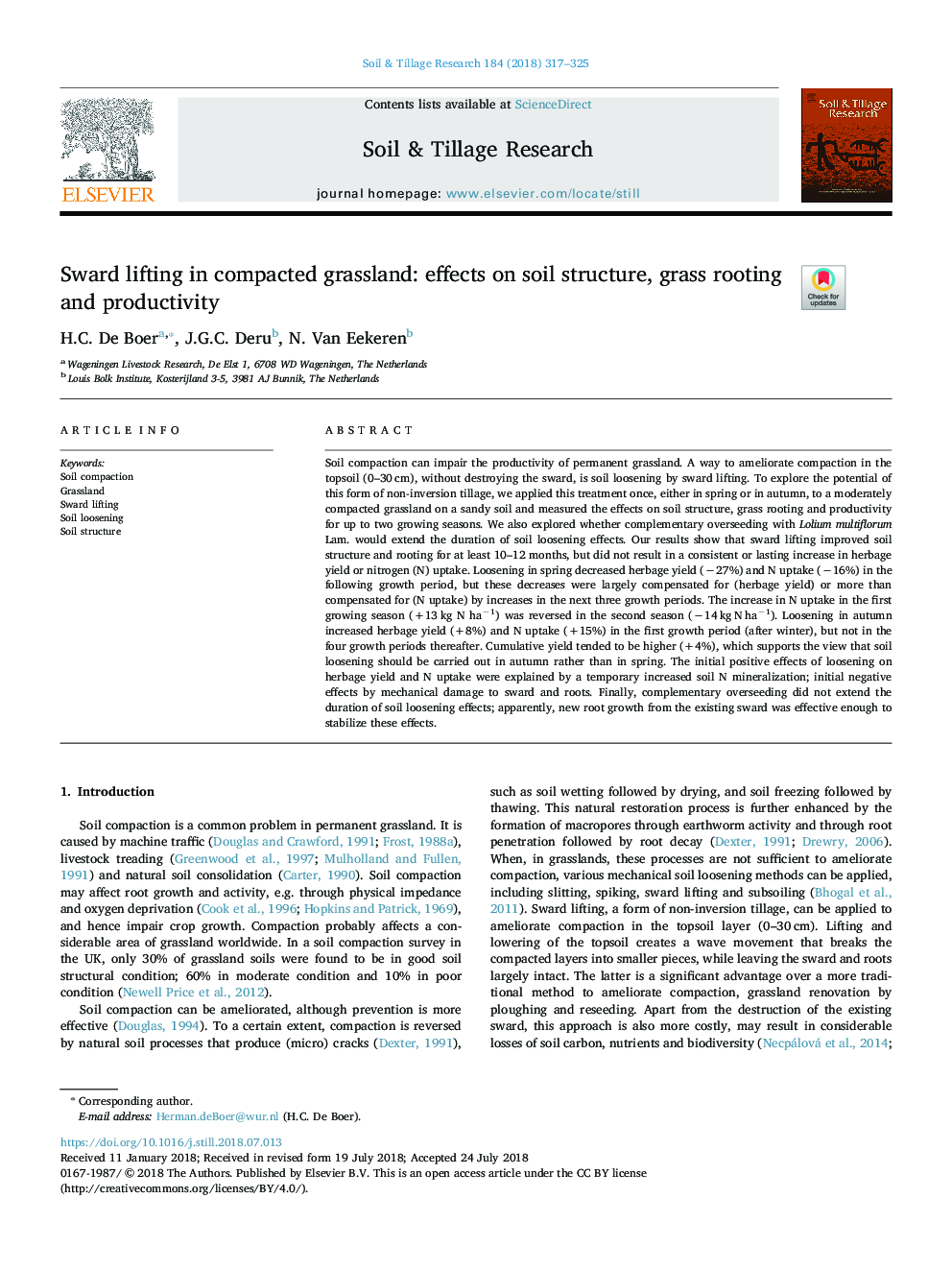| کد مقاله | کد نشریه | سال انتشار | مقاله انگلیسی | نسخه تمام متن |
|---|---|---|---|---|
| 11001274 | 1431819 | 2018 | 9 صفحه PDF | دانلود رایگان |
عنوان انگلیسی مقاله ISI
Sward lifting in compacted grassland: effects on soil structure, grass rooting and productivity
ترجمه فارسی عنوان
بلند کردن سیب در چمن زنی فشرده: اثرات بر ساختار خاک، ریشه زایی و بهره وری
دانلود مقاله + سفارش ترجمه
دانلود مقاله ISI انگلیسی
رایگان برای ایرانیان
کلمات کلیدی
تراکم خاک، چمنزار بلند کردن سیب، خیس شدن خاک، ساختار خاک،
موضوعات مرتبط
مهندسی و علوم پایه
مهندسی انرژی
انرژی های تجدید پذیر، توسعه پایدار و محیط زیست
چکیده انگلیسی
Soil compaction can impair the productivity of permanent grassland. A way to ameliorate compaction in the topsoil (0-30âcm), without destroying the sward, is soil loosening by sward lifting. To explore the potential of this form of non-inversion tillage, we applied this treatment once, either in spring or in autumn, to a moderately compacted grassland on a sandy soil and measured the effects on soil structure, grass rooting and productivity for up to two growing seasons. We also explored whether complementary overseeding with Lolium multiflorum Lam. would extend the duration of soil loosening effects. Our results show that sward lifting improved soil structure and rooting for at least 10-12 months, but did not result in a consistent or lasting increase in herbage yield or nitrogen (N) uptake. Loosening in spring decreased herbage yield (â27%) and N uptake (â16%) in the following growth period, but these decreases were largely compensated for (herbage yield) or more than compensated for (N uptake) by increases in the next three growth periods. The increase in N uptake in the first growing season (+13âkg N haâ1) was reversed in the second season (â14âkgâNâhaâ1). Loosening in autumn increased herbage yield (+8%) and N uptake (+15%) in the first growth period (after winter), but not in the four growth periods thereafter. Cumulative yield tended to be higher (+4%), which supports the view that soil loosening should be carried out in autumn rather than in spring. The initial positive effects of loosening on herbage yield and N uptake were explained by a temporary increased soil N mineralization; initial negative effects by mechanical damage to sward and roots. Finally, complementary overseeding did not extend the duration of soil loosening effects; apparently, new root growth from the existing sward was effective enough to stabilize these effects.
ناشر
Database: Elsevier - ScienceDirect (ساینس دایرکت)
Journal: Soil and Tillage Research - Volume 184, December 2018, Pages 317-325
Journal: Soil and Tillage Research - Volume 184, December 2018, Pages 317-325
نویسندگان
H.C. De Boer, J.G.C. Deru, N. Van Eekeren,
